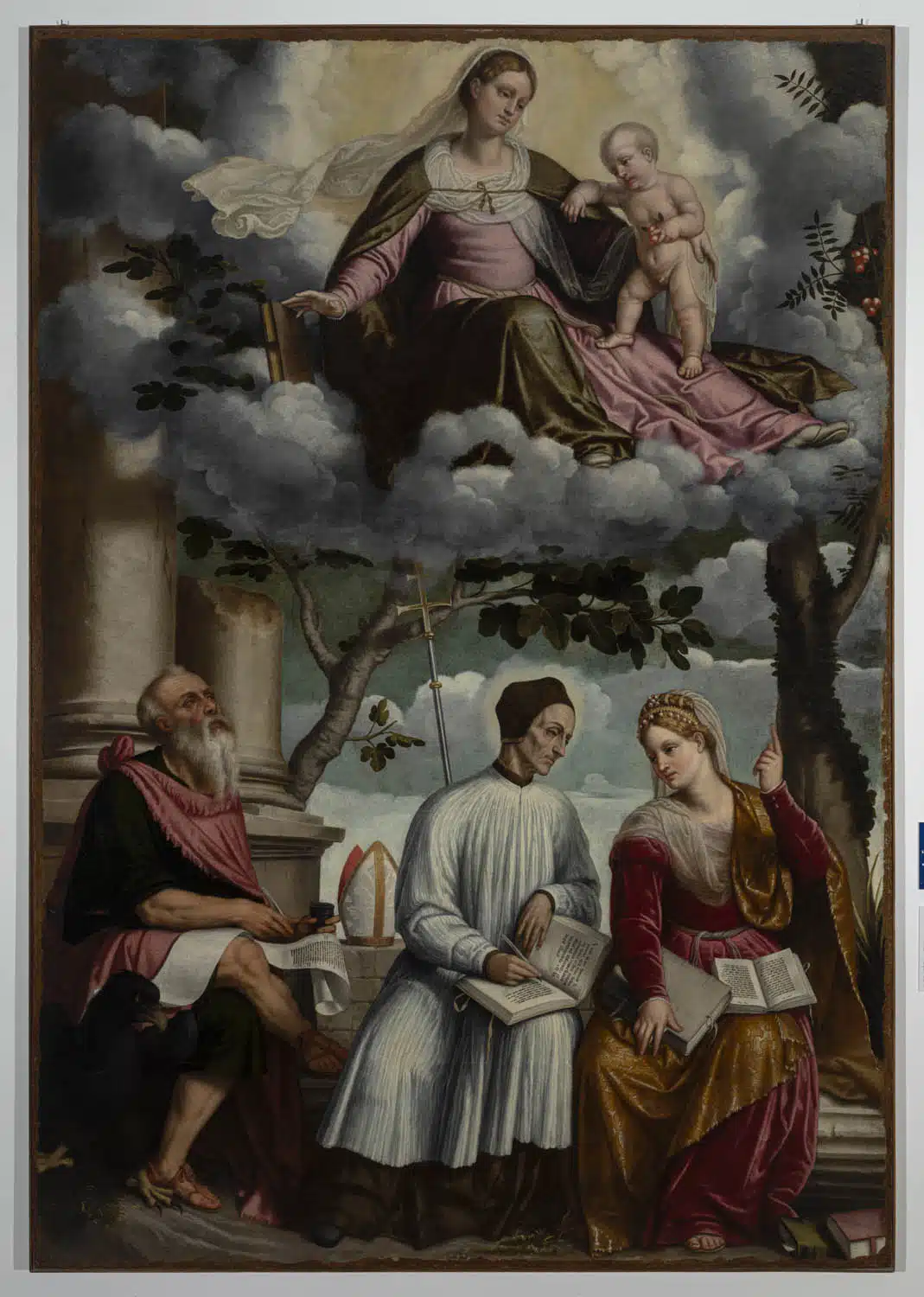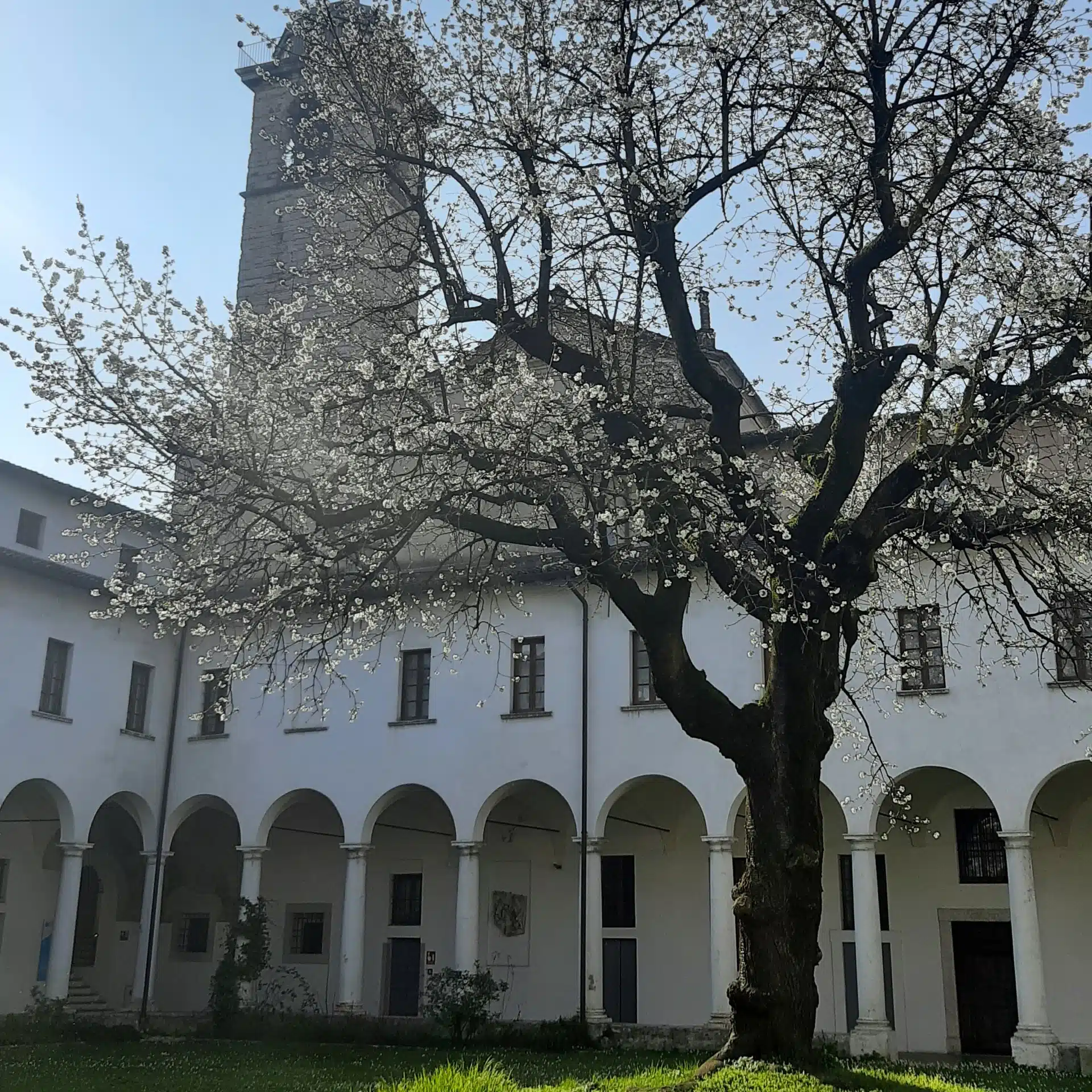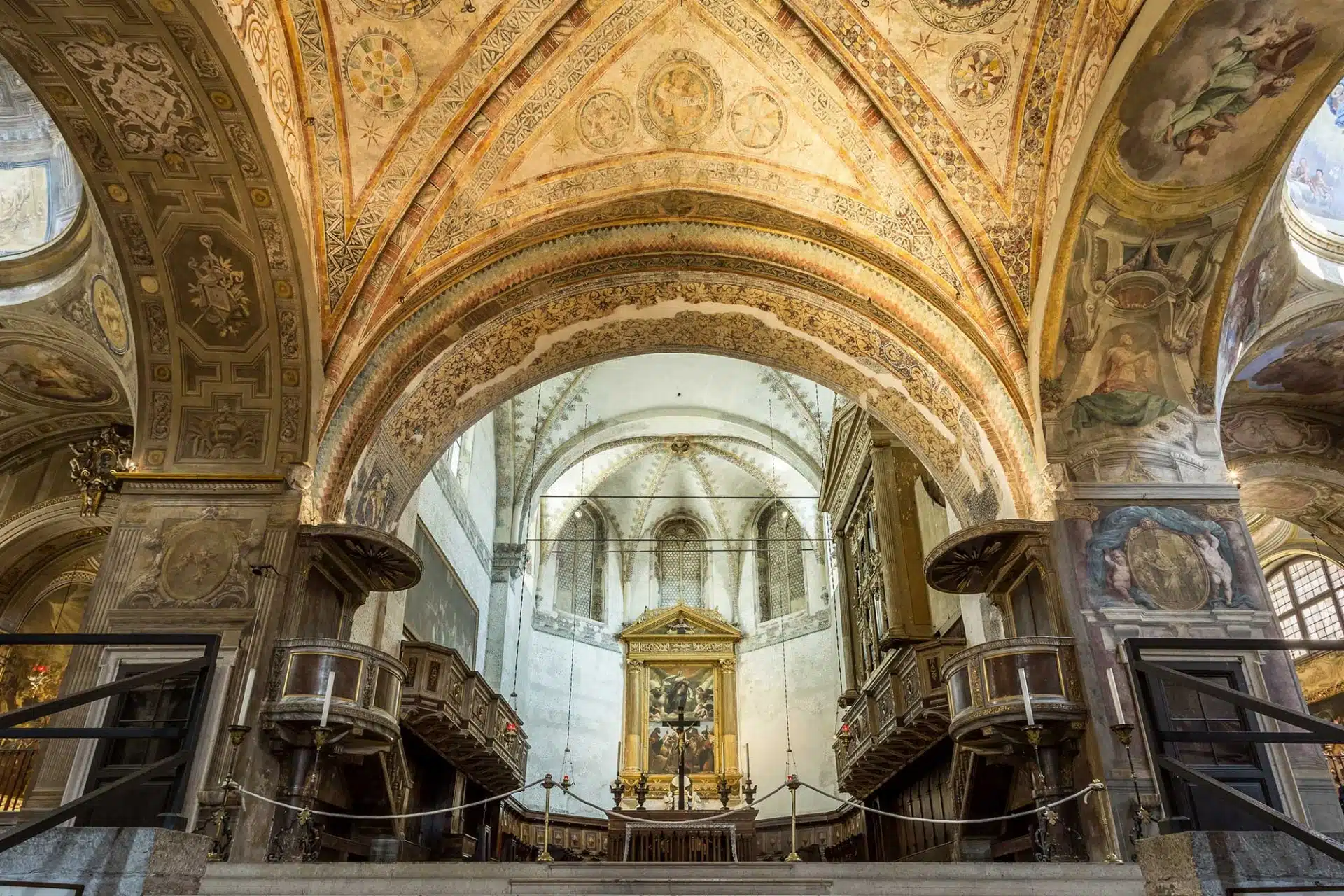Giuditta con la testa di Oloferne
Autore: Agostino Salloni (Brescia, documentato tra il 1657 e il 1699) Olio su tela - 194x143 cm Provenienza: Brescia, Chiesa di San Giorgio -
La tela proviene dalla chiesa di San Giorgio, antistante il complesso di San Giuseppe.
Curiosamente, non viene menzionata nelle guide artistiche settecentesche alla città di Brescia e nemmeno negli elenchi dei beni della chiesa. Per cui, non si ha nessuna ipotesi sulla sua origine.
Il restauro del 1978 ha riportato alla luce la raffinata cromia dell’opera e la scritta “DIVO GEORGIO / CYPRIANUS BAZZINUS / DICAVIT / 1686”.
La tela è attribuita ad Agostino Salloni, pittore ancora poco documentato e ricordato come “assai medriocre”.
La sua attività viene collocata dal 1657, anno in cui firma un lunettone per la chiesa di San Giovanni Evangelista a Brescia, e il 1699, quando viene menzionato in un pagamento di un quadro eseguito per Tavernola Bergamasca.
Il soggetto della tela si ispira al Libro di Giuditta dell’Antico Testamento, dove si narrano le vicende di Giuditta, vedova della città di Betulia. La donna ammalia e decapita il capitano assiro Oloferne, salvando il suo popolo dall’assedio e dalla dominazione straniera.
Nell’atmosfera cupa della notte, Giuditta ha appena decapitato Oloferne e consegna la testa all’ancella perché la infili nel sacco.
Nonostante i trent’anni di distanza tra il lunettone di San Giovanni Evangelista e quest’opera, è ancora evidente nello stile di Salloni l’apporto classicista della pittura emiliana e bolognese.
Si riconosce un eco dell’arte di Pietro Ricchi, documentato a Brescia tra il 1634 e il 1652. Fu autore di un ciclo di affreschi per la chiesa parrocchiale di Bienno (1634-1636) e un altro (perduto) per la parrocchiale di Bagolino (entro il 1652).
Secondo gli studiosi, la Giuditta di Salloni sarebbe una trasposizione quasi fedele ma ampollosa di una omonima tela del Lucchese. Da essa avrebbe ripreso il particolare del corpo esanime di Oloferne che sbuca dall’oscurità dell’ambiente.











